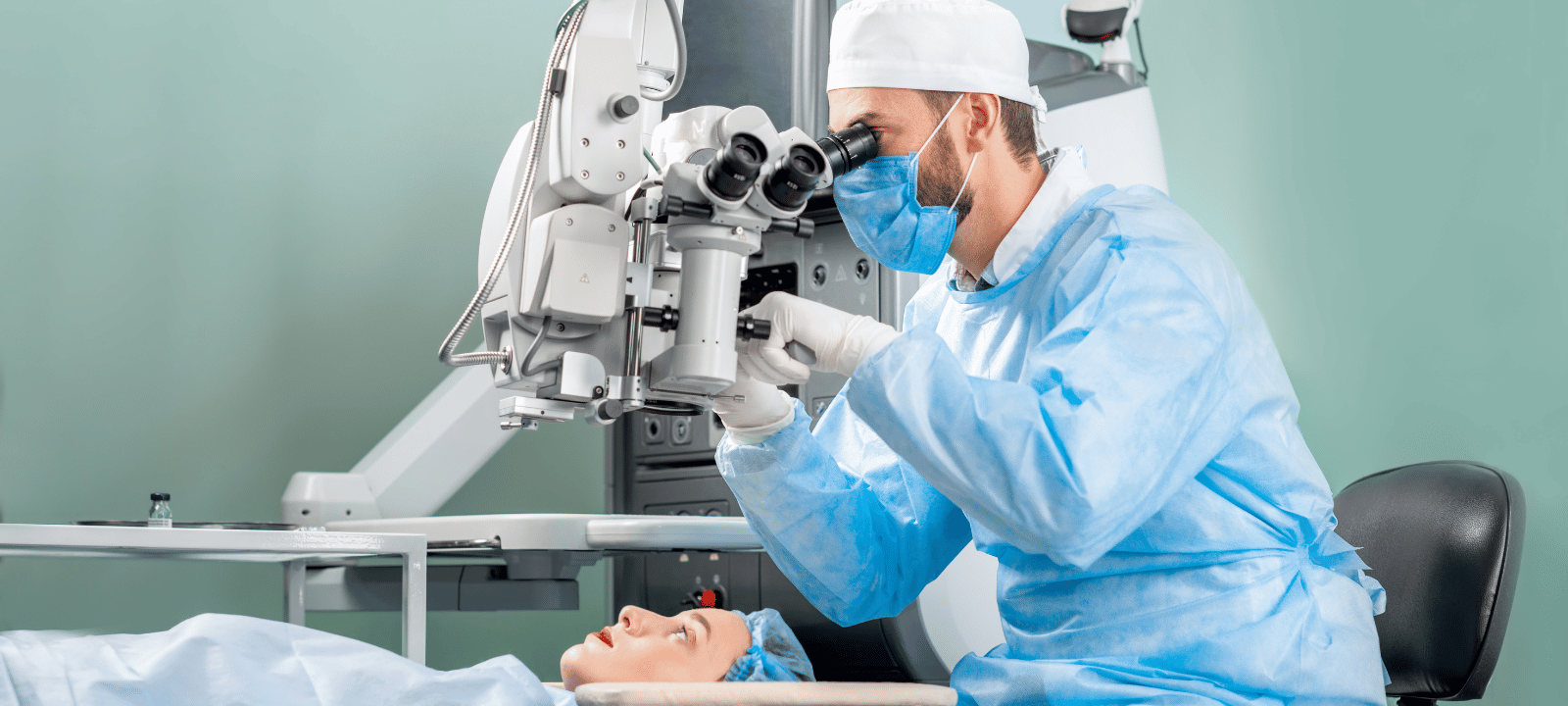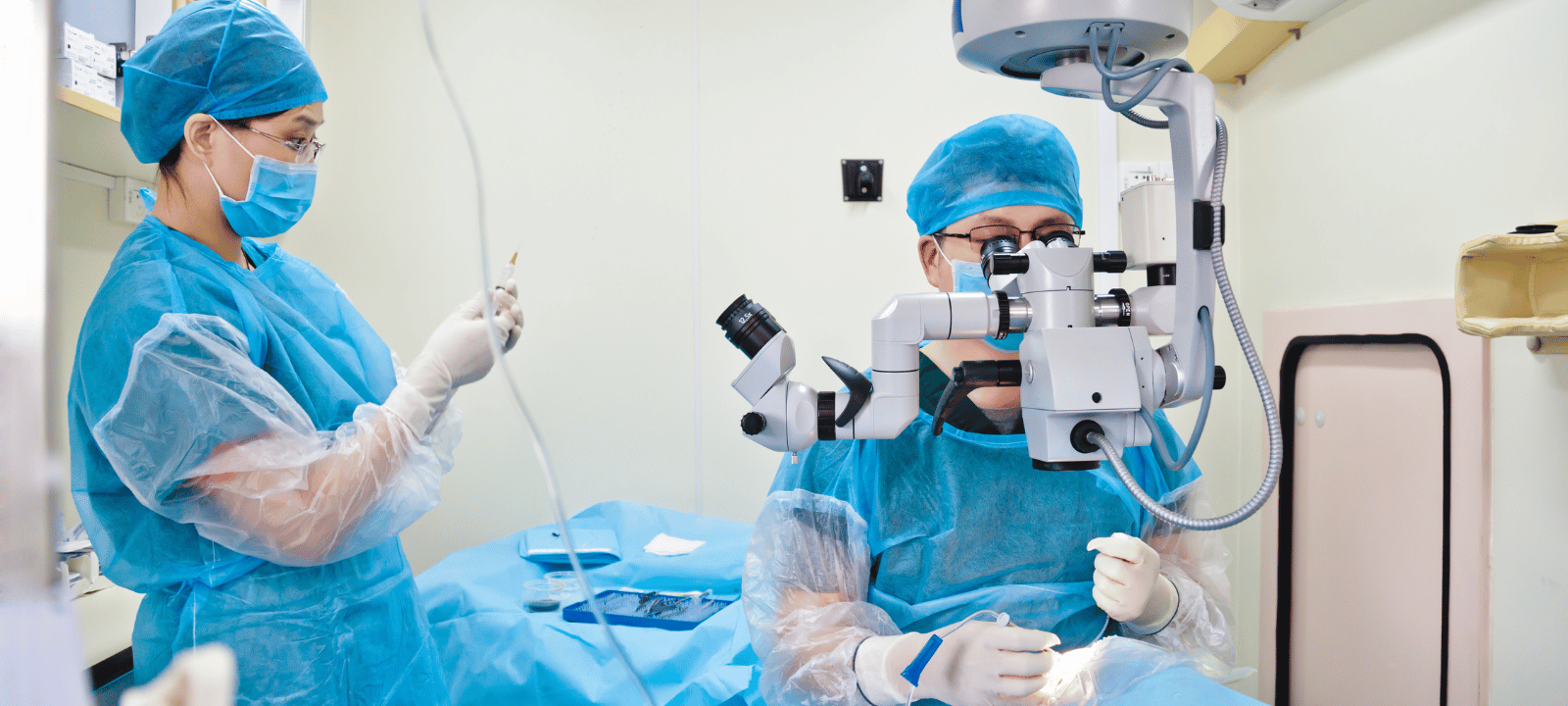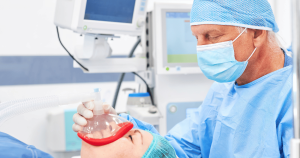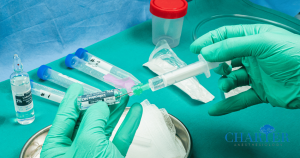
Are you considering cataract surgery? If so, what kind of anesthesia will be used during the procedure? The many forms of anesthetic used for cataract surgery will be discussed in this blog, along with the advantages, dangers, and side effects and how to prepare for the process. We’ll also discuss the recovery process after anesthesia during cataract surgery. With this information, you’ll be better prepared to decide about your cataract surgery.
Types of Anesthesia Used During Cataract Surgery

Cataract surgery is a routine procedure, and the type of anesthesia used can significantly affect how comfortable the patient is. Several types of anesthesia can be used for cataract surgery, including local anesthesia, topical anesthesia, intravenous sedation, and general anesthesia. Each type of anesthesia has benefits and risks, and discussing the options with your doctor before the procedure is essential.
Local Anesthesia:
Local anesthesia is a numbing medication injected directly into the area around the eye to numb the area. This type of anesthesia is often used for cataract surgery because it is fast-acting, and the effects wear off quickly. The patient may feel pressure or discomfort during the injection, but it should not be painful.
Topical Anesthesia:
Topical anesthesia is a type of numbing medication that is applied directly to the eye. This type of anesthesia is often used for cataract surgery because it is fast-acting, and the effects wear off quickly. The patient may feel pressure or discomfort during the application, but it should not be painful.
Intravenous Sedation:
Intravenous sedation is a type of anesthesia that is administered through an IV. This type of anesthesia is often used for cataract surgery because it is fast-acting, and the effects wear off quickly. The patient may feel pressure or discomfort during the injection, but it should not be painful.
General Anesthesia:
General anesthesia is a type of anesthesia that is administered through an IV. This type of anesthesia is often used for cataract surgery because it is fast-acting, and the effects wear off quickly. During the operation, the patient will be entirely asleep, and the anesthesia’s effects will endure until the patient is fully awake.
No matter which type of anesthesia is used for cataract surgery, discussing the options with your doctor before the procedure is essential. Your doctor will be able to provide the best advice on which type of anesthesia is best for you.
Benefits of Anesthesia During Cataract Surgery

The pain associated with cataract surgery may be minimized safely and effectively using anesthesia. It lowers the risk of problems and enables the patient to stay motionless during the procedure. The following advantages of anesthesia during cataract surgery:
– Pain Relief: Anesthesia helps to reduce the pain associated with cataract surgery. It can also help to reduce the anxiety that some patients may feel before the surgery.
– Muscle Relaxation: Anesthesia helps to relax the muscles around the eye, which makes it easier for the surgeon to perform the surgery. This may lower the possibility of issues and enhance the surgical procedure’s results.
– Improved Patient Comfort: Anesthesia helps to reduce the discomfort associated with the surgery, which can help to make the patient more comfortable during the procedure. It can also help reduce the time the patient needs to be under anesthesia.
Overall, anesthesia during cataract surgery can provide several benefits for the patient. It can help to reduce the pain and discomfort associated with the procedure, as well as reduce the risk of complications. Additionally, it can help improve the patient’s comfort during the procedure and reduce the time the patient needs to be under anesthesia.
Risks and Side Effects of Anesthesia During Cataract Surgery

The safe and efficient technique of removing a cataract may restore eyesight and enhance quality of life. Like any medical operation, anesthesia during cataract surgery has certain risks and adverse effects. The most frequent adverse effects include allergic responses, low blood pressure, dizziness, nausea, and vomiting.
Nausea and vomiting can occur due to anesthesia and can be managed with anti-nausea medications. Dizziness and confusion may also occur due to the effects of anesthesia and can be managed with rest and time. Low blood pressure is another side effect of anesthesia that can be managed with fluids and medications. Although uncommon, allergic reactions to anesthesia are possible and may be treated with medicine.
Before having cataract surgery, it is essential to go through any possible dangers and side effects of anesthesia with your doctor. Your doctor can provide information on the risks and side effects associated with the anesthesia used during cataract surgery and help you decide the best course of action for you.
Preparation for Anesthesia During Cataract Surgery

When preparing for anesthesia during cataract surgery, you should take a few essential steps to ensure a safe and successful procedure. First, it is crucial to fast before surgery. This means avoiding food and drink for at least 8 hours before the procedure.
It is also essential to inform your doctor of any medications, allergies, and medical conditions you may have. These will all help your doctor to select the best type of anesthesia for your procedure. It’s also crucial to adhere to your doctor’s preparation recommendations, such as taking a shower prior or refraining from certain activities. By following these steps, you can help ensure that your cataract surgery is safe and successful.
Recovery After Anesthesia During Cataract Surgery
After a patient has undergone cataract surgery, monitoring their recovery from the anesthesia is essential. Monitoring vital indicators like heart rate and blood pressure is part of this, as is keeping an eye out for symptoms of nausea and vomiting, dizziness or confusion, and allergic responses.It is essential to monitor the patient’s vitals closely, as this will help ensure that the patient is recovering appropriately and that their body responds well to the anesthesia. Vital signs should be monitored regularly until the patient is fully recovered.
Monitoring the patient for any signs of nausea and vomiting is also essential. Nausea and vomiting can occur after anesthesia and can be a sign of a more severe complication. Patients with nausea and vomiting should be thoroughly watched and adequately cared for. Confusion or disorientation is another common side effect of anesthesia. Monitoring the patient for signs of confusion or disorientation is essential, as this can signify a more severe complication. If the patient is confused or disoriented, they should be monitored closely and treated appropriately.

Finally, monitoring the patient for any signs of allergic reactions is essential. Allergic reactions to anesthesia can occur and can be severe. If any signs of an allergic reaction are noticed, the patient should be monitored closely and treated appropriately.
Recovery from anesthesia during cataract surgery is an essential part of the healing process. Regular monitoring of the patient and timely intervention to address possible issues are crucial. The patient can be ensured a safe and successful recovery by monitoring the patient’s vital signs, nausea and vomiting, confusion or disorientation, and signs of allergic reactions.
Conclusion
An essential component to the success of cataract surgery is the use of anesthesia, delivered skillfully by a qualified anesthetic team, such as Charter Anesthesiology. While the potential risks and side effects of anesthesia in this context shouldn’t be underestimated, they are typically outweighed by its significant benefits during the procedure.
Having adequate knowledge about the different types of anesthesia used, the advantages, drawbacks, and side effects, plus the preparation and recovery processes, enables patients to make empowered decisions regarding their respective cataract surgeries. With expert care from the team at Charter Anesthesiology, patients can be confident that their cataract surgeries will be executed with the utmost safety and precision.





